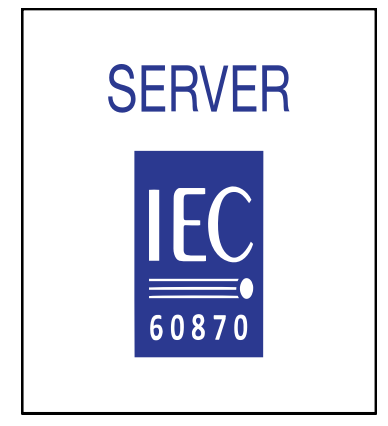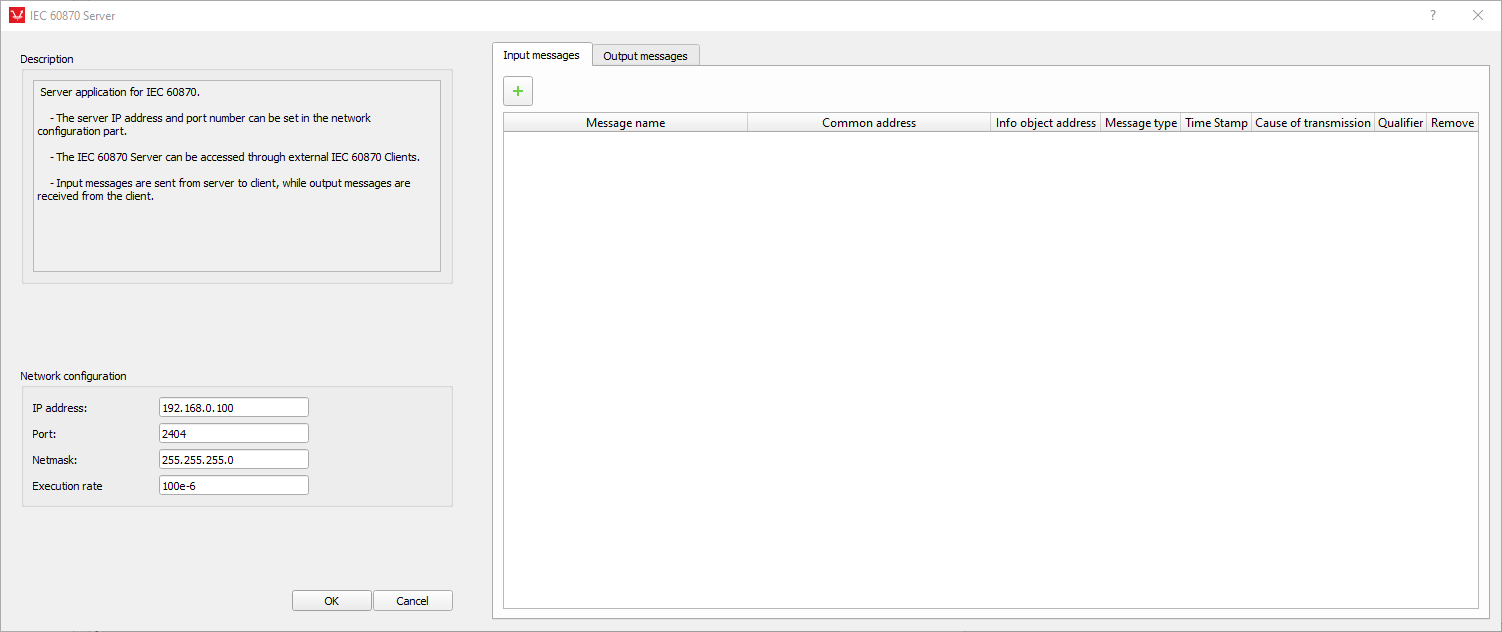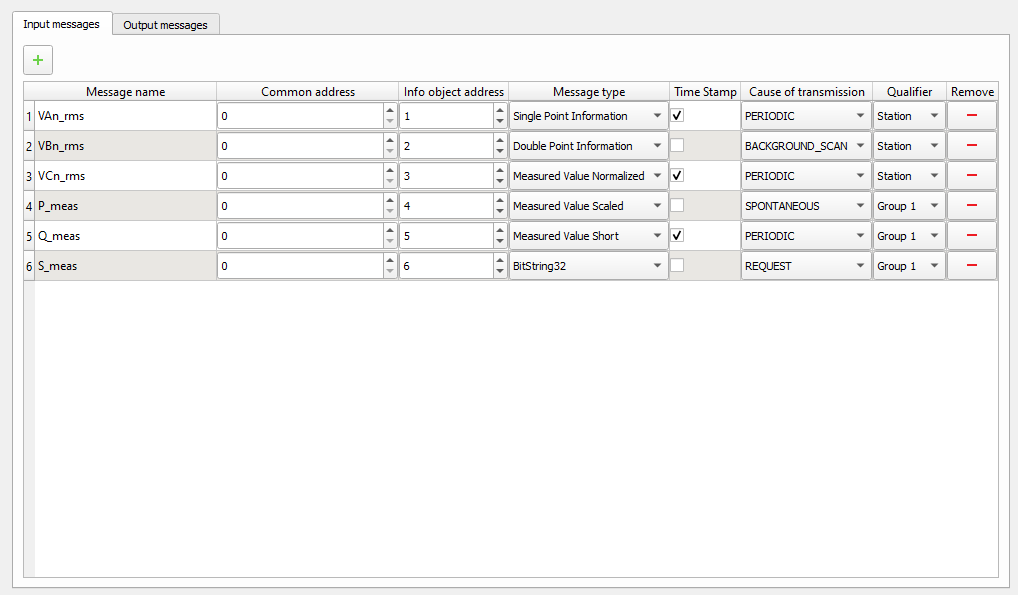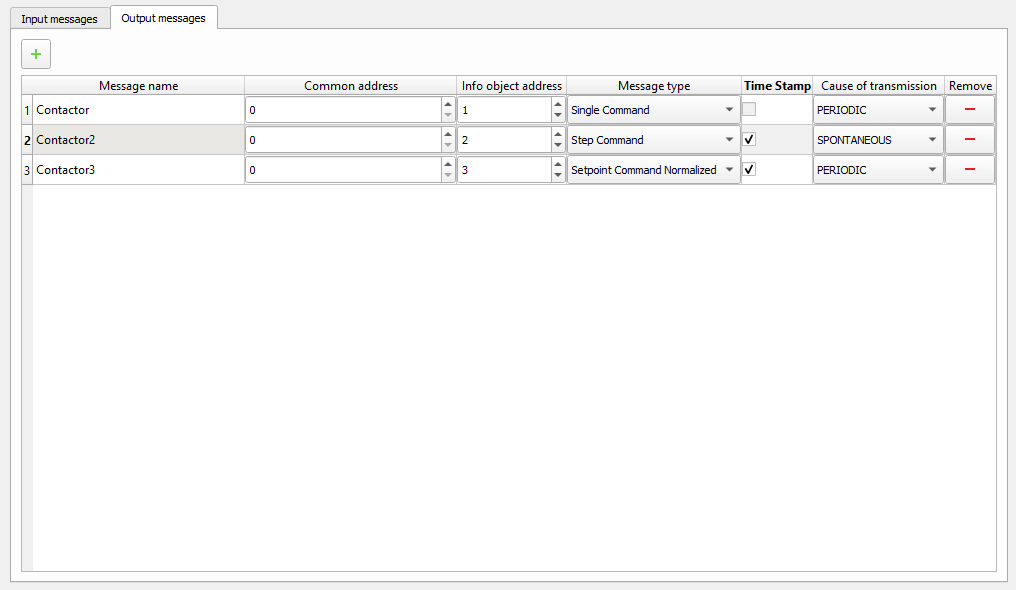IEC 60870 Server
Description of the IEC 60870 protocol implementation in the Typhoon HIL toolchain.
IEC 60870-5-104/IEC 104 protocol
IEC 60870-5-104 protocol (aka IEC 104) is a part of IEC Telecontrol Equipment and Systems Standard IEC 60870-5 that provides a communication profile for sending basic telecontrol messages between two systems in electrical engineering and power system automation. Telecontrol means transmitting supervisory data and data acquisition requests for controlling power transmission grids.
IEC 104 provides the network access to IEC 60870-5-101 (aka IEC 101) using standard transport profiles. In simple terms, it delivers IEC 101 messages as application data over TCP, port 2404. IEC 104 enables communication between control station and a substation via a standard TCP/IP network. The communication is based on the client-server model.
- Controlled station is monitored or commanded by a master station (RTU). It is also called outstation, remote station, RTU, 101-Slave, or 104-Server.
- Controlling station is a station where a control of outstations is performed (SCADA). Typically, it is a PC with SCADA system, can be also a RTU32.
- Monitor Direction is a direction of transmission from the controlled station (RTU) to the controlling station (PC).
- Control Direction is a direction of transmission from the controlling station, typical a SCADA system, to the controlled station, typical an RTU.
- Reversed Direction is the direction when the monitored station is sending commands and the controlling station is sending data to the monitor.
- An example of process information in monitoring direction is a measured value, e.g., a bit or an analog. In control direction it can be a command to set a bit or a value.
- An example of system information in monitoring direction is initiation flag, in the control direction it can be interrogation command, reset, etc.
Thus, application data is carried within the ASDU within one or more information objects. Depending on the variable structure flag there may be multiple information objects each containing a defined set of one or more information elements, or there may be just one information object containing a number of identical information elements. In either case, the information element is the fundamental component used to convey information under the protocol.
IEC 60870 protocol in the Typhoon HIL toolchain
IEC 60870 protocol is supported on the following Typhoon HIL devices: HIL402, HIL101, HIL404, HIL602+, HIL604, HIL506, and HIL606.
IEC 60870 protocol is implemented through IEC 60870 Server inside the Typhoon HIL toolchain. The IEC 60870 Server is modeled using a signal processing component, and can be found in the Communication library category in the IEC 60870 sub-category.
IEC 60870 Server component
| Component | Component properties |
|---|---|
 IEC 60870 Server component |
|

The property description for the IEC 60870 Server component is given in Table 2 .
| Property name | Description |
|---|---|
| IP address | Server IP address value |
| Port | Server port value |
| Netmask | Server netmask value |
| Execution rate | Execution rate of the IEC 60870 Server component |
With the + (plus) button on the input message tab, a new ASDU input message is added to the input message table in the IEC 60870 Server dialog window.

- Message name - name of the ASDU input message that is shown on the IEC 60870 Server component.
- Common address - the common address of the ASDU message.
- Info object address - the address of the information object added to the ASDU message.
- Message type - type of info object message.
- Time stamp - choose if the message has a time stamp or not.
- Cause of transmission - reason for sending message.
- Qualifier - qualifier of the interrogation command.
With the + (plus) button on the output message tab, a new ASDU output message is added to the output message table in the IEC 60870 Server dialog window.
Figure 3 shows how the output messages can be defined.

- Message name - name of the ASDU output message that is shown on the IEC 60870 Server component.
- Common address - the common address of the ASDU message.
- Info object address - the address of the information object added to the ASDU message.
- Message type - type of info object message.
- Time stamp - choose if the message has a time stamp or not.
- Cause of transmission - reason for receiving message.
An IEEE 4 node model with an implemented IEC 60870 server is shown in IEC 60870 Server example.

Number of simultaneous IEC 60870 Server components
Currently Typhoon HIL Control Center only supports one server per HIL device.
Virtual HIL support
Virtual HIL currently does not support this protocol. When using a Virtual HIL environment (e.g. when running the model on a local computer), inputs to this component will be discarded and outputs from this component will be zeroed.